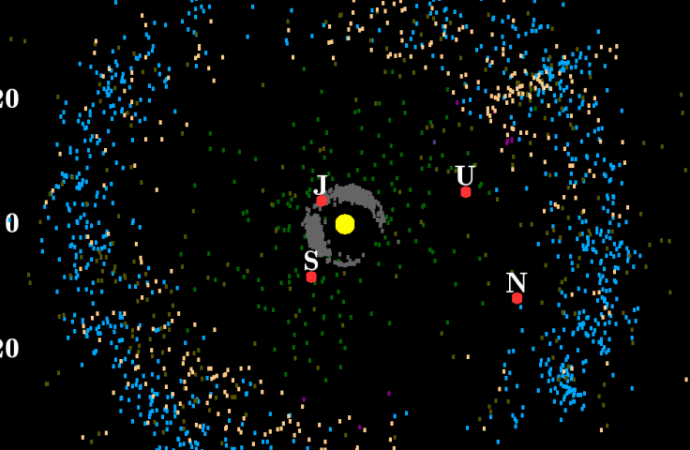Since it fell sixteen years ago, scientists have been looking closely at the Tagish Lake meteorite, and it is made up of different materials from other meteorites.
A trio of researchers is suggesting that a meteorite retrieved from the surface of a frozen lake in Canada may have come from the Kuiper belt—which if true, would be the first to be so identified. In their paper published in the Astronomical Journal, William Bottke and David Nesvorný with Southwest Research Institute in Boulder Colorado and David Vokrouhlický with Charles University in the Czech Republic outline their reasons for believing the meteorite did not come from the asteroid, but from much farther out.
In addition to eight planets, our solar system has a ring of asteroids that circle the sun between Jupiter and Mars—aptly named the asteroid belt. But out past Neptune, the most distant planet from the sun, there is another ring that circles the sun, this one called the Kuiper belt (named after Dutch astronomer Gerard Kuiper)—Pluto is just one of the objects in it. Evidence to date suggests that all of the meteorites that have been found on Earth came to us from the asteroid belt. Now, there may be an exception, as the researchers claim there is evidence to suggest the Tagish Lake meteorite (which fell in British Columbia in 2000) came from the Kupier belt.
Since it fell sixteen years ago, scientists have been looking closely at the rock, because it looked different from other meteorites. An early analysis showed that it was made mostly of carbon, but it had a higher concentration of amino acids than other meteorites—some parts as much as 100 times the usual amount.
Bottke, Nesvorný and Vokrouhlický suggest that its makeup is similar to material that has been measured in the vicinity of the larger gas giants in our solar system such as Jupiter and Saturn. They report that their simulations indicate such asteroids were once part of the Kuiper belt but were pulled inward (along with others from the Kupier belt) during a time when the big planets were jostling for position—some have even suggested that there might have once existed another gas giant in our solar system. Some of those asteroids, they note, quite likely made their way to the asteroid belt, which would have allowed them eventually to make their way to Earth.
On a related note, NASA recently approved a new mission for the New Horizon spacecraft that will bring it closer to an object in the Kuiper belt and perhaps demonstrate a close match between it and the Tagish Lake meteorite, possibly confirming the researcher’s theory.
Source: Phys.org

































Leave a Comment
You must be logged in to post a comment.